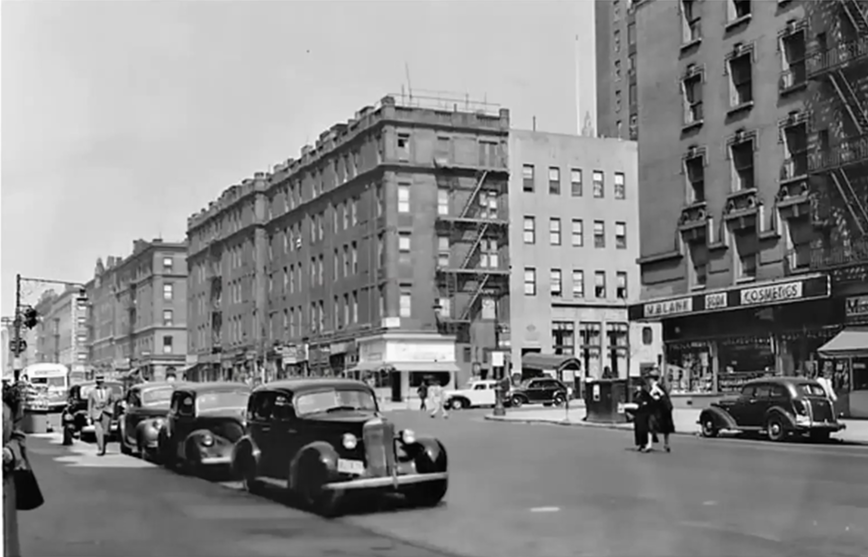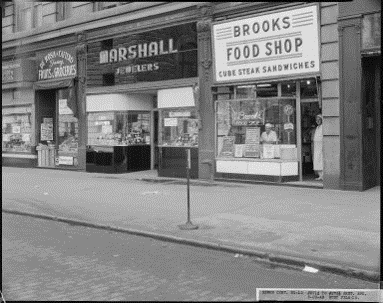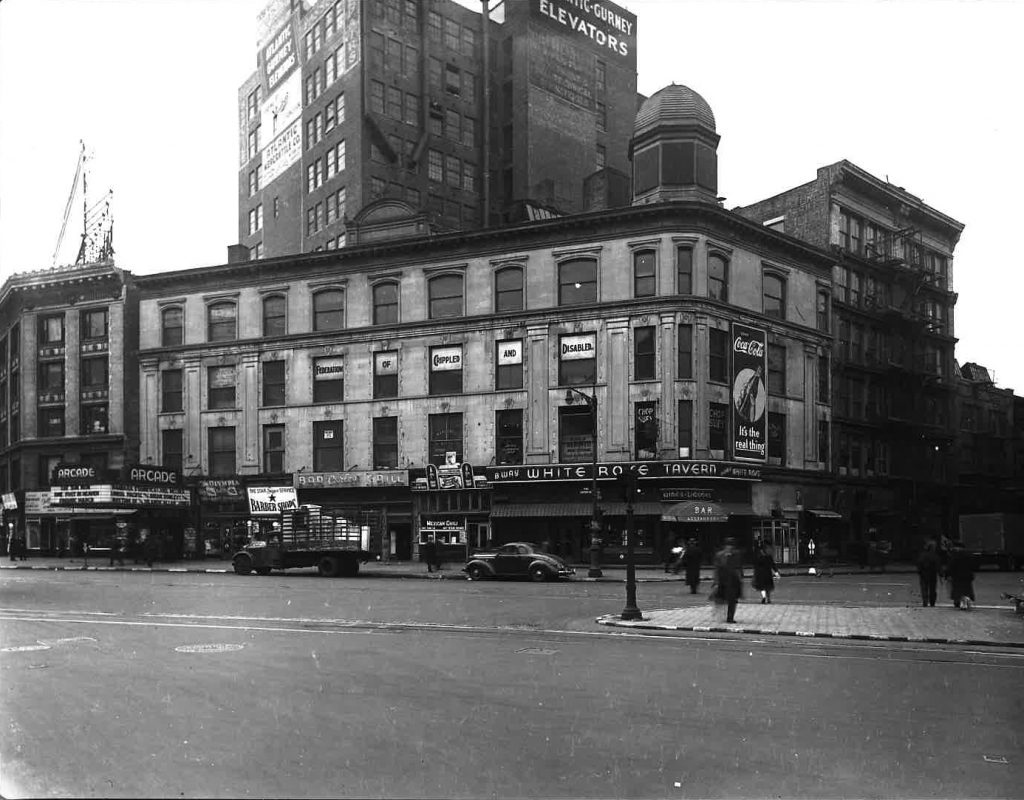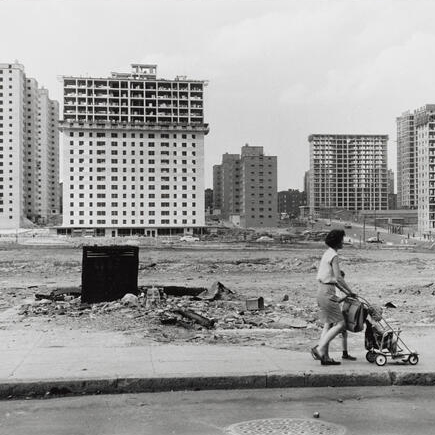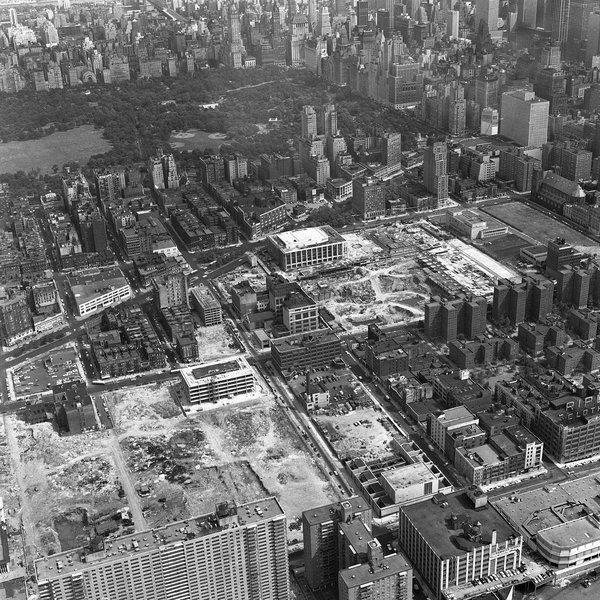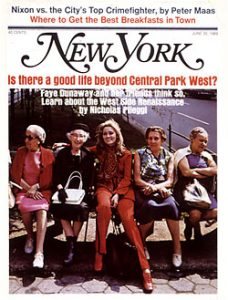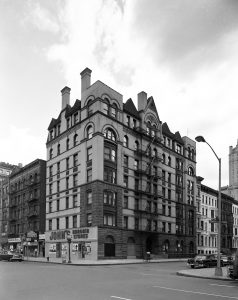Keeping the Past for the Future
Urban HistoriansUsing the Upper West Side as our case study, this program explores the development of the UWS from WWII through to present day, specifically exploring the shifts in population and demographics on the UWS and how this influences our urban landscape and what evidence we find of this today.
Using our neighbourhood, we learn how the changes we see in it today track with broader societal changes across the US, and contemplate what future changes will bring.
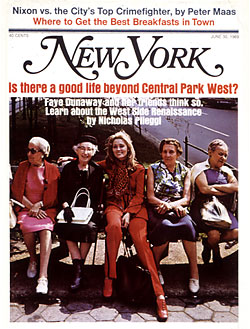
- Late 1930s - Growing Shadow of War
- 1940s - War and a Changing City
- Mid 20th Century and Urban Renewal
- 1950s-1970s - A Shifting Population
- 1980s - Economic Boom
-
Late 1930s – Growing Shadow of War
In the lead up to World War II, the Upper West Side sees an influx of immigrants moving uptown.Tenements on the crowded Lower East Side continue to grow, prompting many families to begin moving north to newer neighborhoods. Throughout the lat 30s, the growing threat of the Nazi regime casts a shadow across Europe, threatening Jewish communities particularly. Many Jewish immigrants and refugees fleeing this danger arrive in the neighborhood at this time.
- Photograph circa 1940 of the intersection of Columbus Avenue and W. 86th Street.
- Storefronts along Amsterdam Avenue between 72nd and 73rd Streets, from a 1949 photograph.
-
1940s – War and a Changing City
World War II impacts daily life on the Upper West Side, which had regular air raid drills and wardens ensuring aparments complied with that practice. The Army practiced maneuvers in Sheep’s Meadow in Central Park. The decade also saw a big increase in immigration from Puerto Rico, where newly arrived American factories were taking over farmland and pushing out local workers. Many reacted to the rising unemployment by seeking manufacturing jobs in New York City. Newly enacted rent control laws also allowed a degree of affordability for these and other tenants seeking a foothold in the neighborhood.
- A view of 1931 Broadway. Picture courtesy of the Office for Metropolitan History.
-
Mid 20th Century and Urban Renewal
In 1949, Pres. Truman signs the Housing Act, which gave federal, state, and local governments unprecedented powers to shape residential life. The government could invoke eminent domain to seize private property for public projects. This act gave rise to urban renewal, a phenomenon of urban buildings and projects; in NYC, the government declared areas to be slums in order to tear them down and construct new buildings. There was a citywide housing shortage after WWII, and the city creates the Slum Clearance Committee (led by Robert Moses), which spearheads these projects. One famous example is the destruction of the San Juan Hill neighborhood, home to prominent Black and Puerto Rican communities, to build Lincoln Center starting in 1956. Community concerns were heard at the time; the Planning Commission and the Lincoln Square Community Council reported that “the local residents feel threatened by such renewal. New construction usually means displacement of the poor, the elderly, the Negro and the Puerto Rican, including many who are lifelong residents. The spectre is of a district and not a neighborhood.”
- A clearance project at Columbus and 97th Street. Pictured in 1959, from the Museum of the City of New York.
- San Juan Hill’s demolition in 1962. c/o John Rooney
-
1950s-1970s – A Shifting Population
Urban renewal allowed the government to displace residents of demolished buildings, but rarely was there a concrete plan to rehouse them. As a result, neighborhoods in adjacent areas saw overcrowding problems get worse than before. For the next decades through the 1970’s, the UWS did not have the same reputation it does today. Many middle-class families had fled to the suburbs after WWII, and rents remained low. The neighborhood attracted artists and young families who needed the lower cost of living, so it retains a reputation as a liberal and artistic kind of place.
- New York Magazine cover from June 30, 1969.
- A view of Columbus Avenue and 74th Street. Picture courtesy of the Office for Metropolitan History.
-
1980s – Economic Boom
An economic boom in the 1980’s started sending wealthier residents in to the Upper West Side. As rent prices rose, many young urban professionals (“yuppies”) with high-paying jobs began moving to the neighborhood. Overall, the UWS’s demographics became wealthier and saw a higher cost of living. Rent prices eventually began to threaten longtime loca businesses. Bigger chain stores began arriving, which could afford high rents on large spaces.
Session One Slides
How did the Upper West Side continue to change and evolve following World War II? Let’s follow the neighborhood from the uncertainty of the wartime period to the yuppies of the 80s.
Primary sources, particularly historic photographs, help us visualize these changes throughout time, and are a good resource for personalizing the past.
Resources – Urban Historians
455 Central Park West/Former New York Cancer Hospital


Frederick Douglass Houses

Southern Baptist Church

West 105th Street & Manhattan Avenue


West 106th Street & Columbus Avenue


Acknowledgements
KPF is made possible by the contributions of Council Members Helen Rosenthal and Mark Levine, as well as the New York State Council of the Arts (NYSCA) and the Department of Cultural Affairs (DCLA). With their support, Landmark West’s KPF program offers a suite of seven 3-part courses aligned with the NYC Core Curriculum in Upper West Side public schools for free every year.

